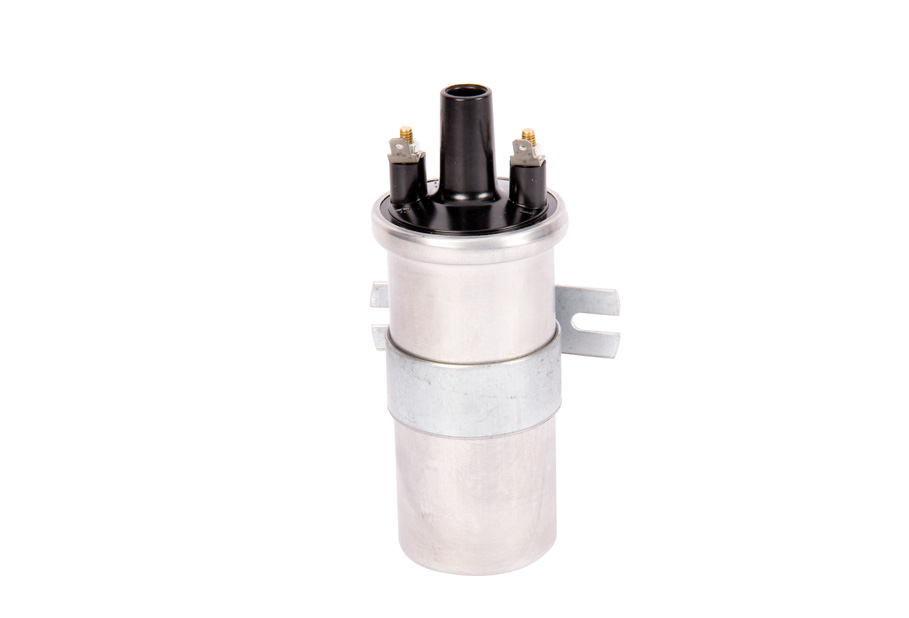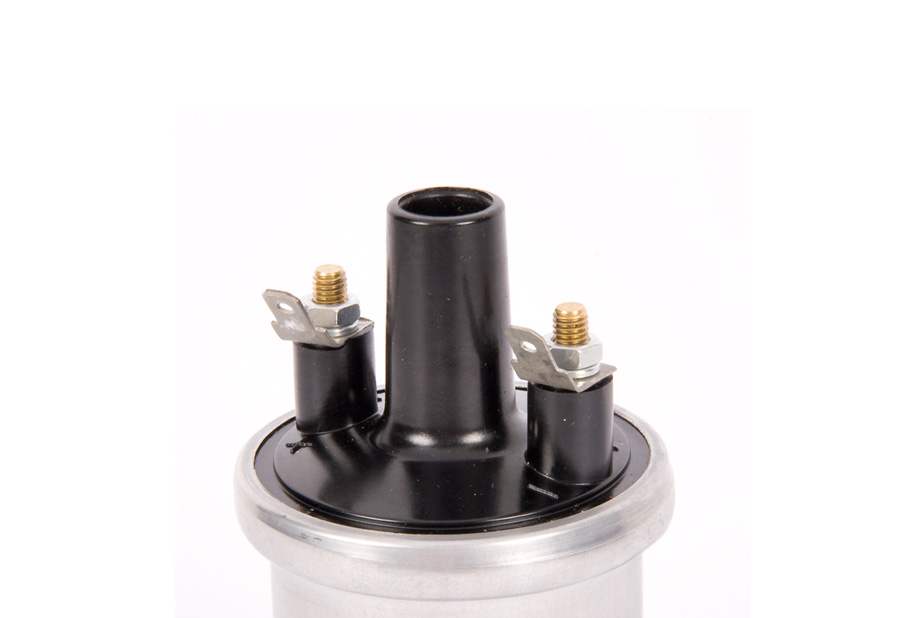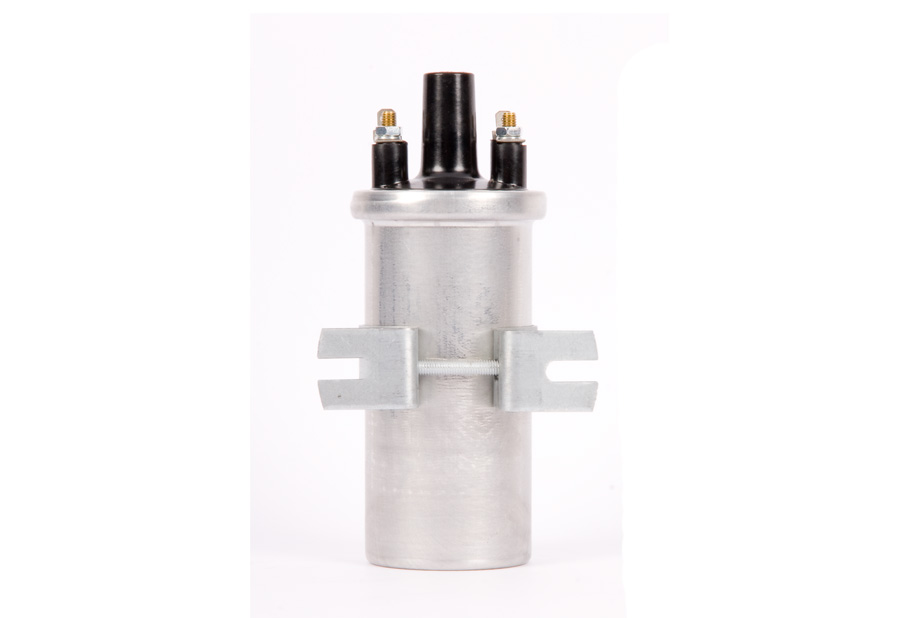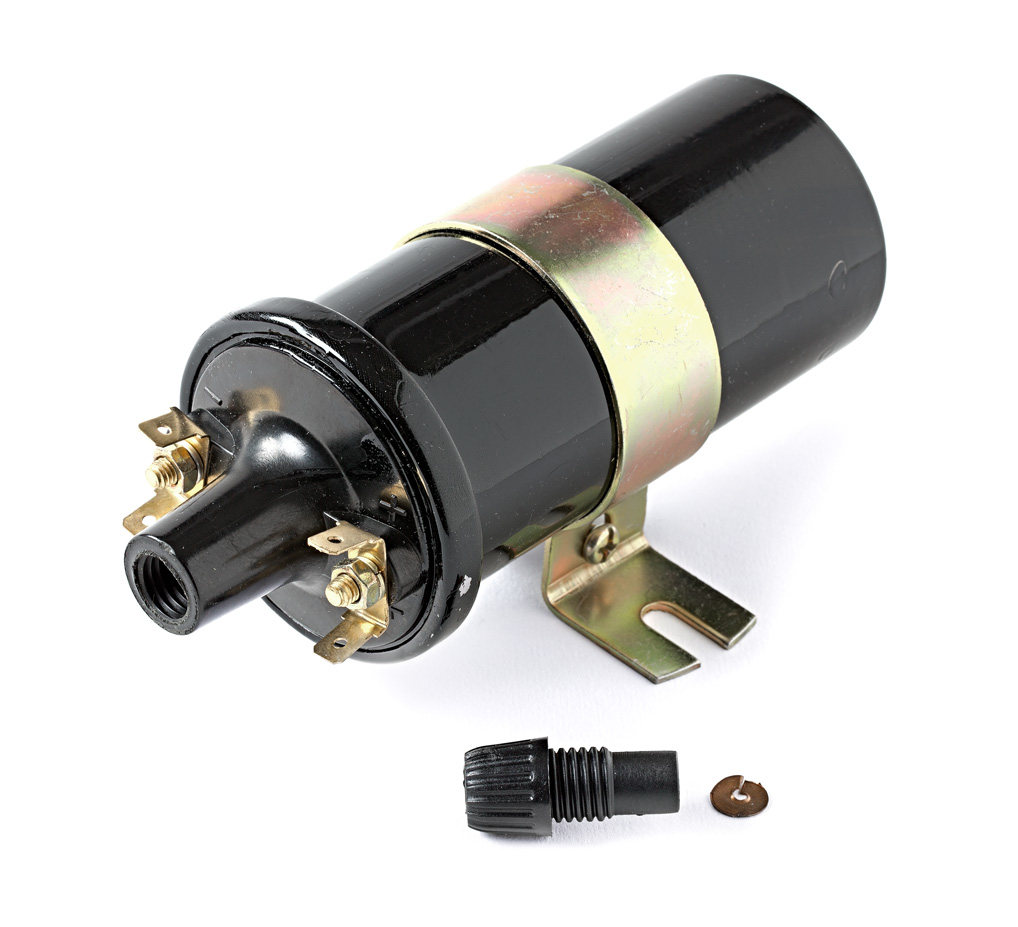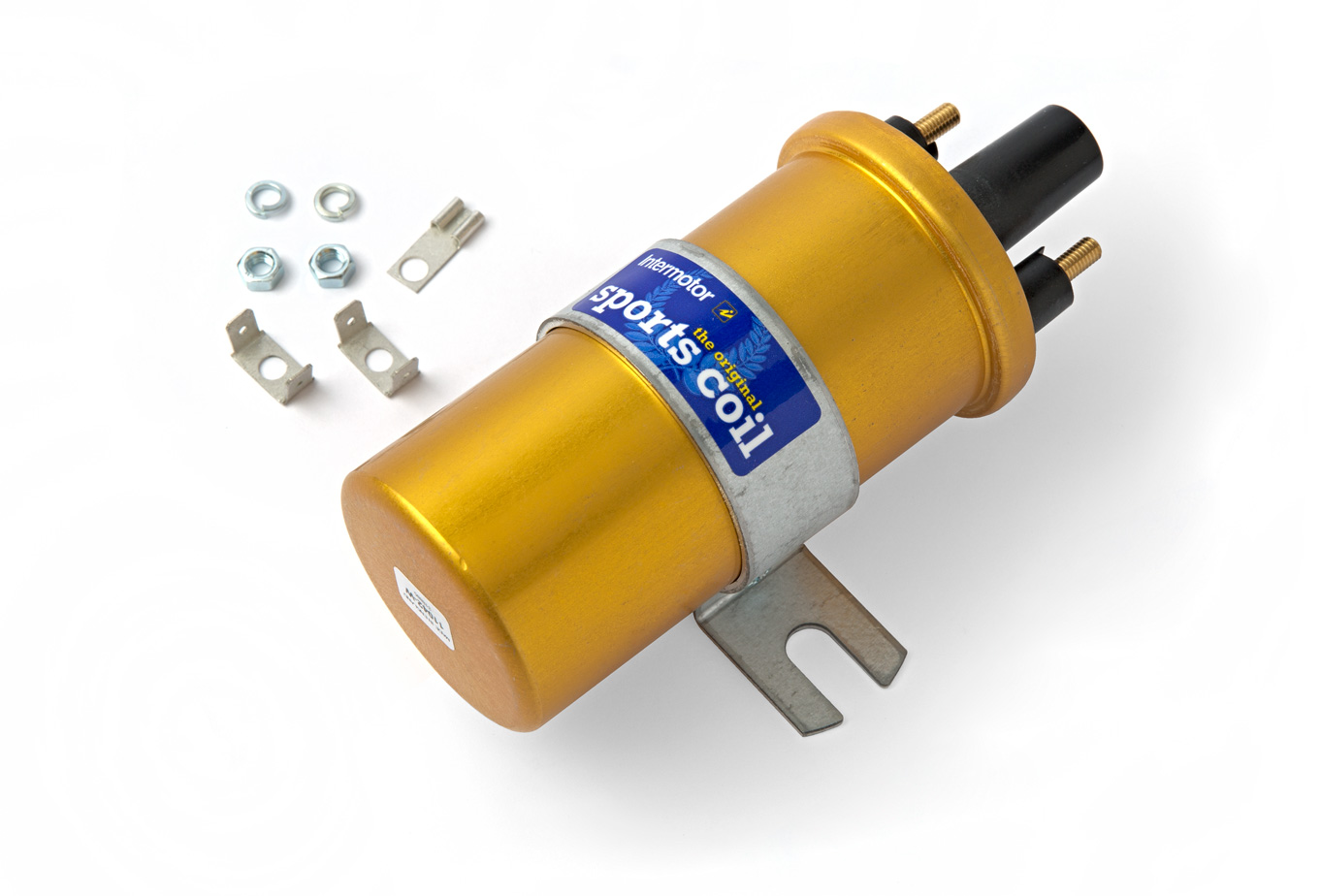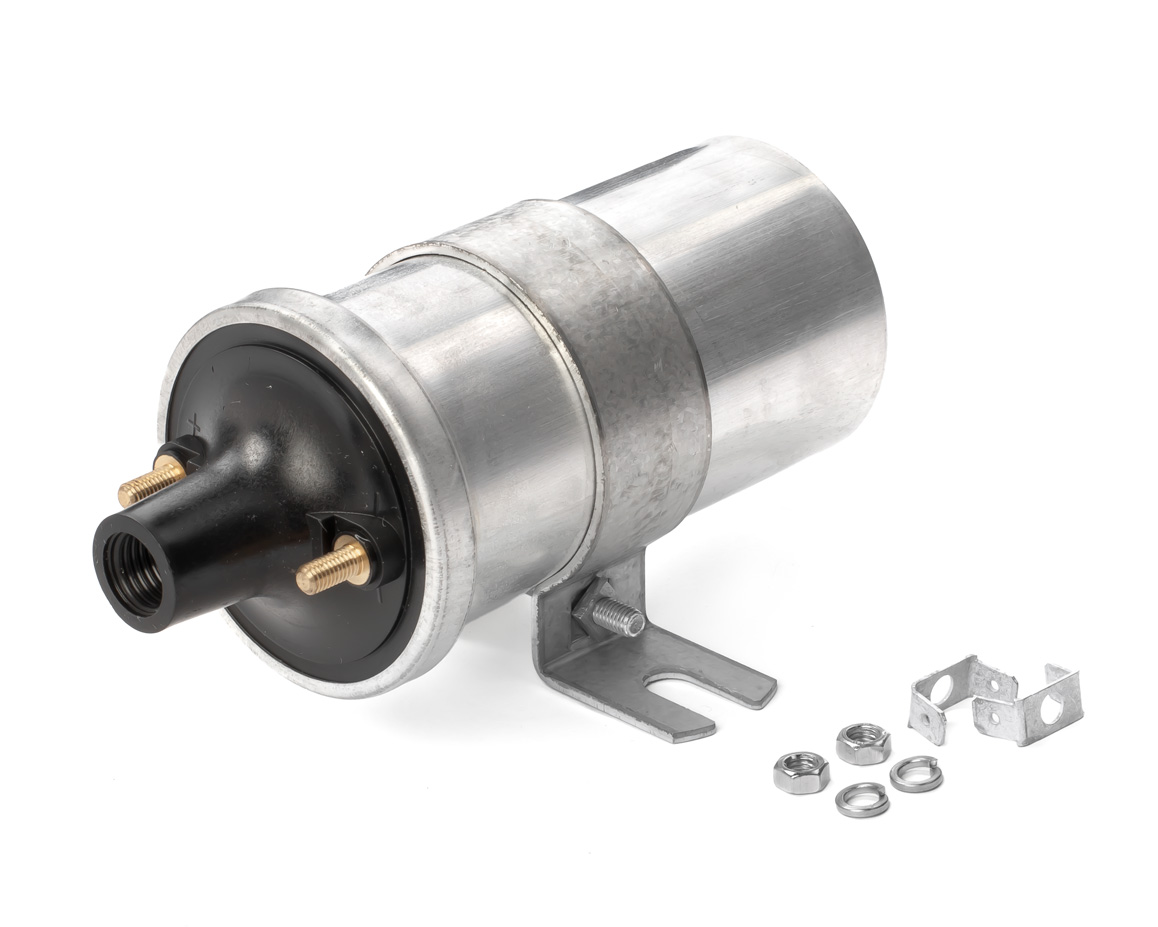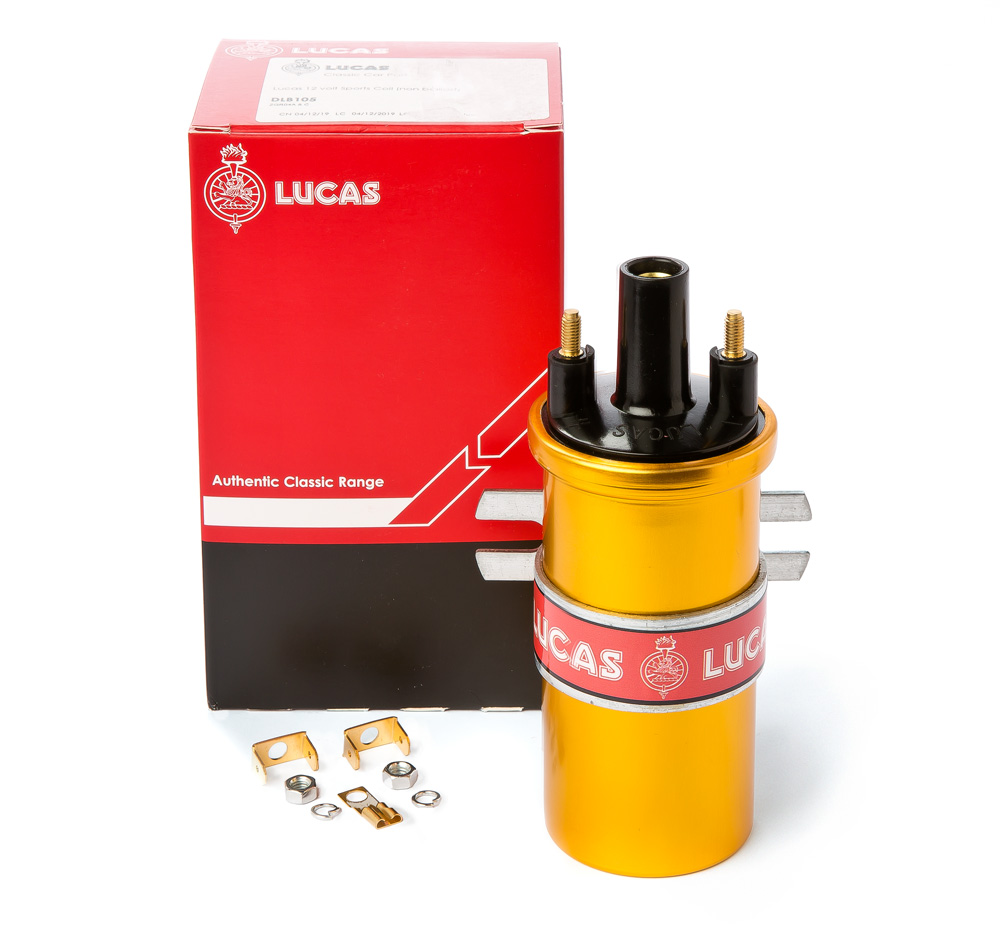High performance ignition coil
Austin Healey: BN1 to BJ8 (1953-68)
Jaguar: All Jaguar 6 cylinder and V8 to 1969
Land Rover: Series II, IIA and III 4 cylinder Petrol (1958-85)
MG: TA, TB, TC, TD and TF (1936-55) • MGA (1955-62) • MGB and MGB V8 chrome bumper (to September 1974) • MGC (1967-69)
Sprite / Midget: 948, 1098 and 1275 (1958-74)
Triumph: Herald (1959-71) • TR2, TR3, TR3A, TR3B, TR4 and TR4A (1952-67) • TR5/250 and TR6 (1968-76) • Spitfire MKI to MKIV 1300 (1962-70) • TR7 and TR8 (1975-81) • Vitesse (1962-71) • Stag (1970-77)
Aston Martin: DB2 (1950-53) • DB2/4 (1953-57) • DB Mark III (1957-59) • DB4 (1958-63)
Morris: Minor with 803 cc, 948 cc and 1098 cc engines (1952-71)
with push-in HT lead terminal and approx. 2.8 Ohm primary resistance. Non ballasted type
Ignition coils have a “+” (POS) and a “-” (NEG) next to each of it’s two low voltage terminals. That’s because coils need to have the same polarity as your system: wiring backwards will weaken the spark. The wire that goes between the distributor points and the low voltage terminal on your coil, the low tension lead, should be connected to the terminal that is labelled for the same polarity as your battery ground. For instance in an early positive earth British Classic Car, the low tension lead should attach at the terminal marked “+” (POS). If that same vehicle were converted to negative earth the coil should be turned 180 degrees in the holder and the wire connected to the “-” (NEG) terminal.
